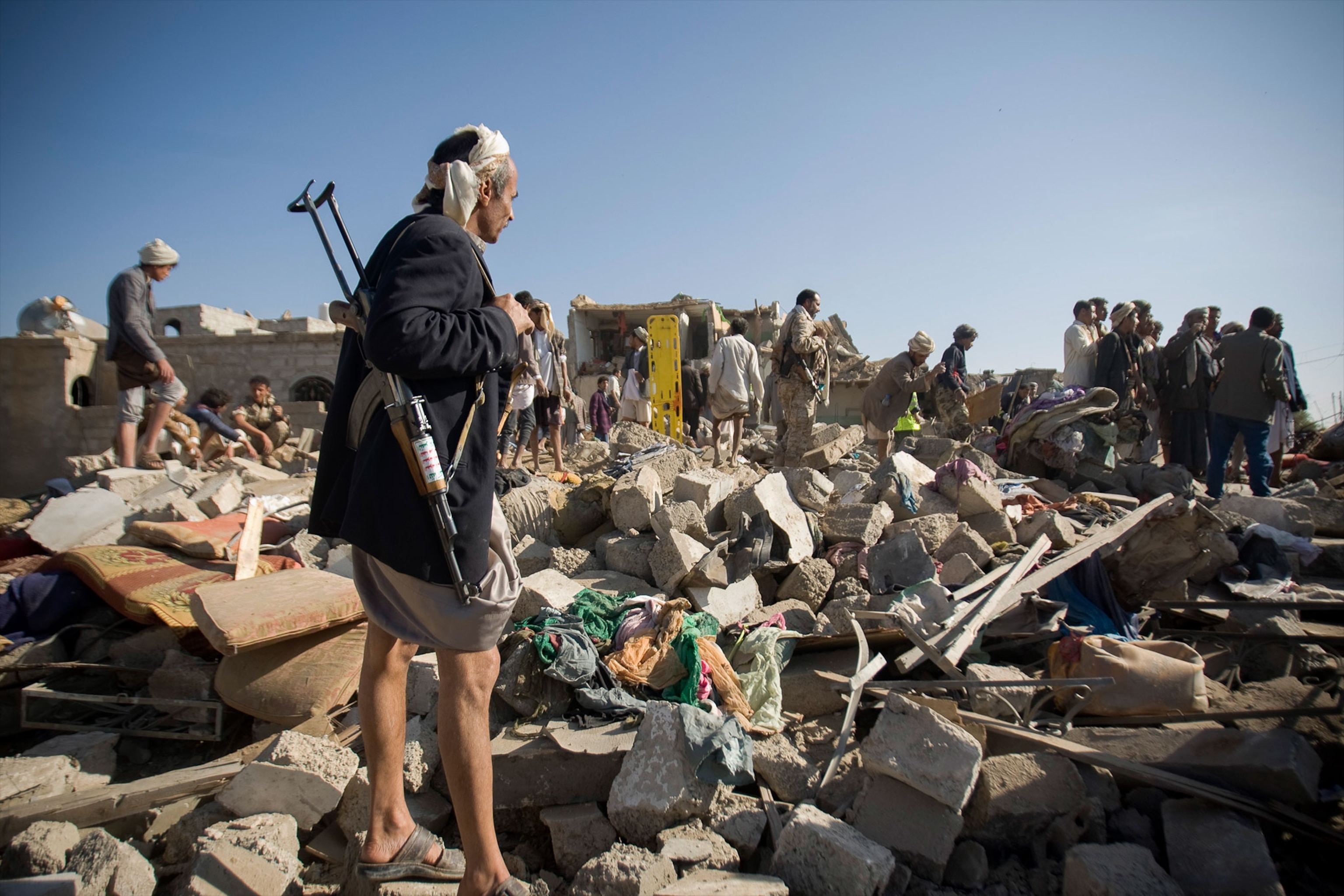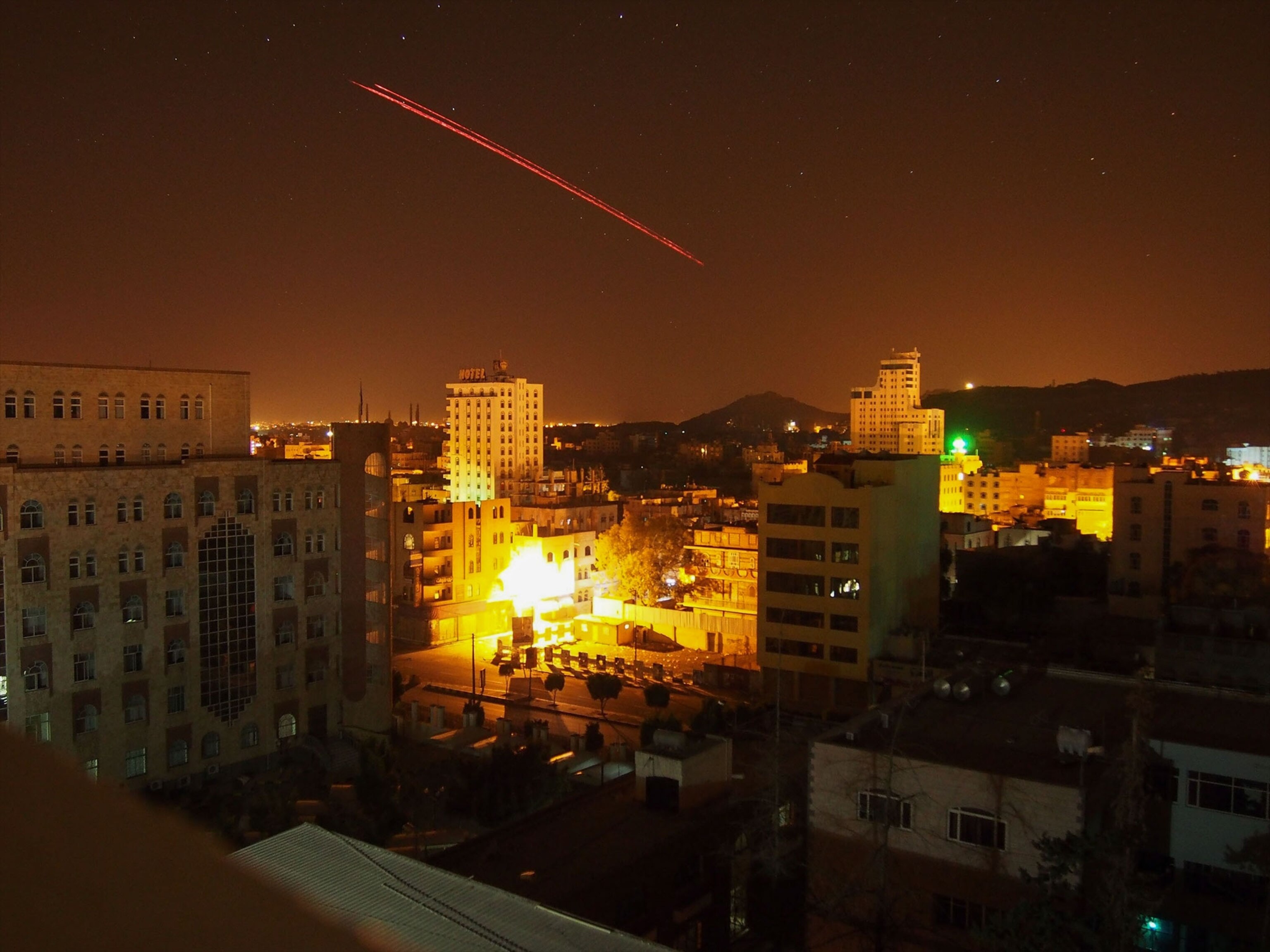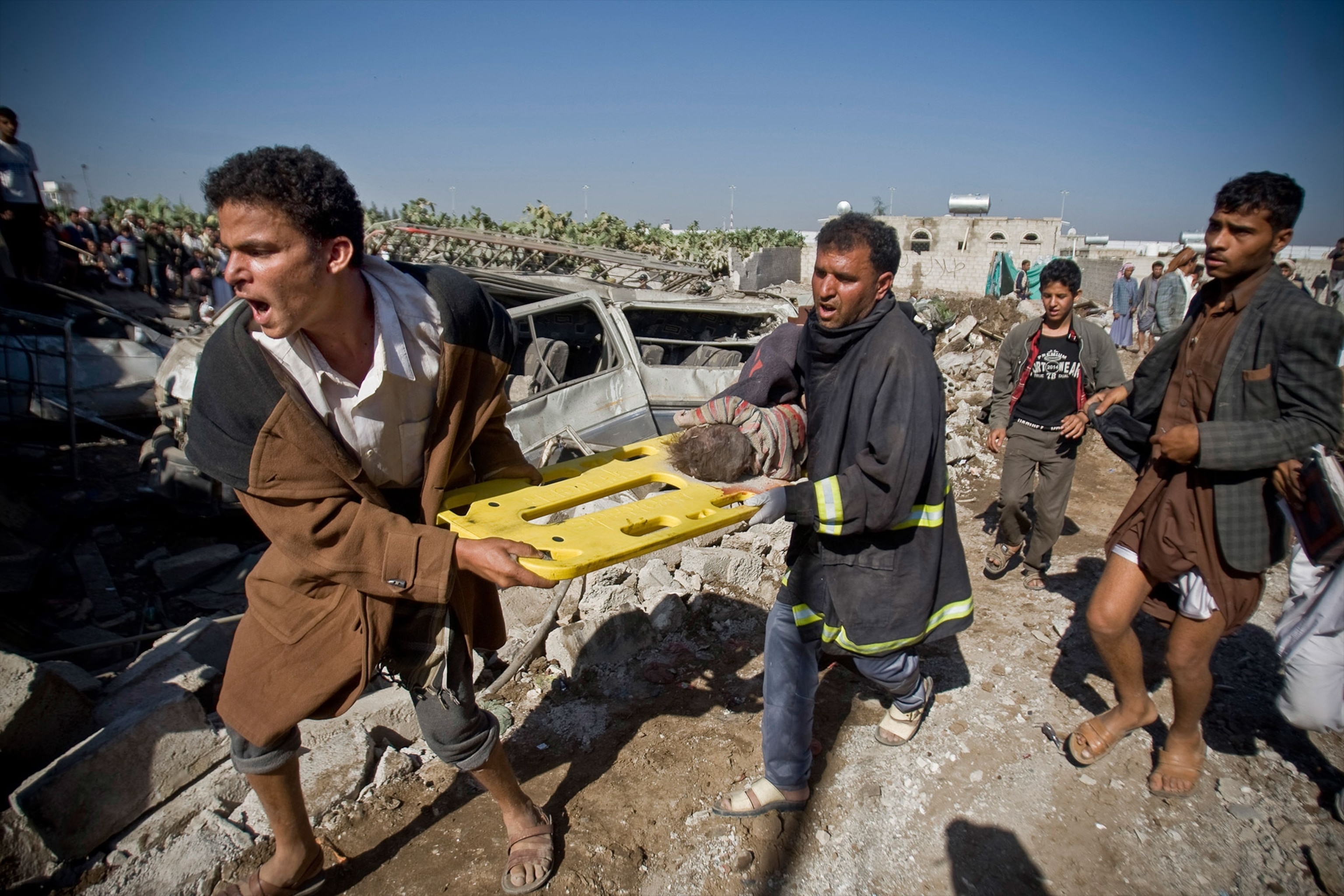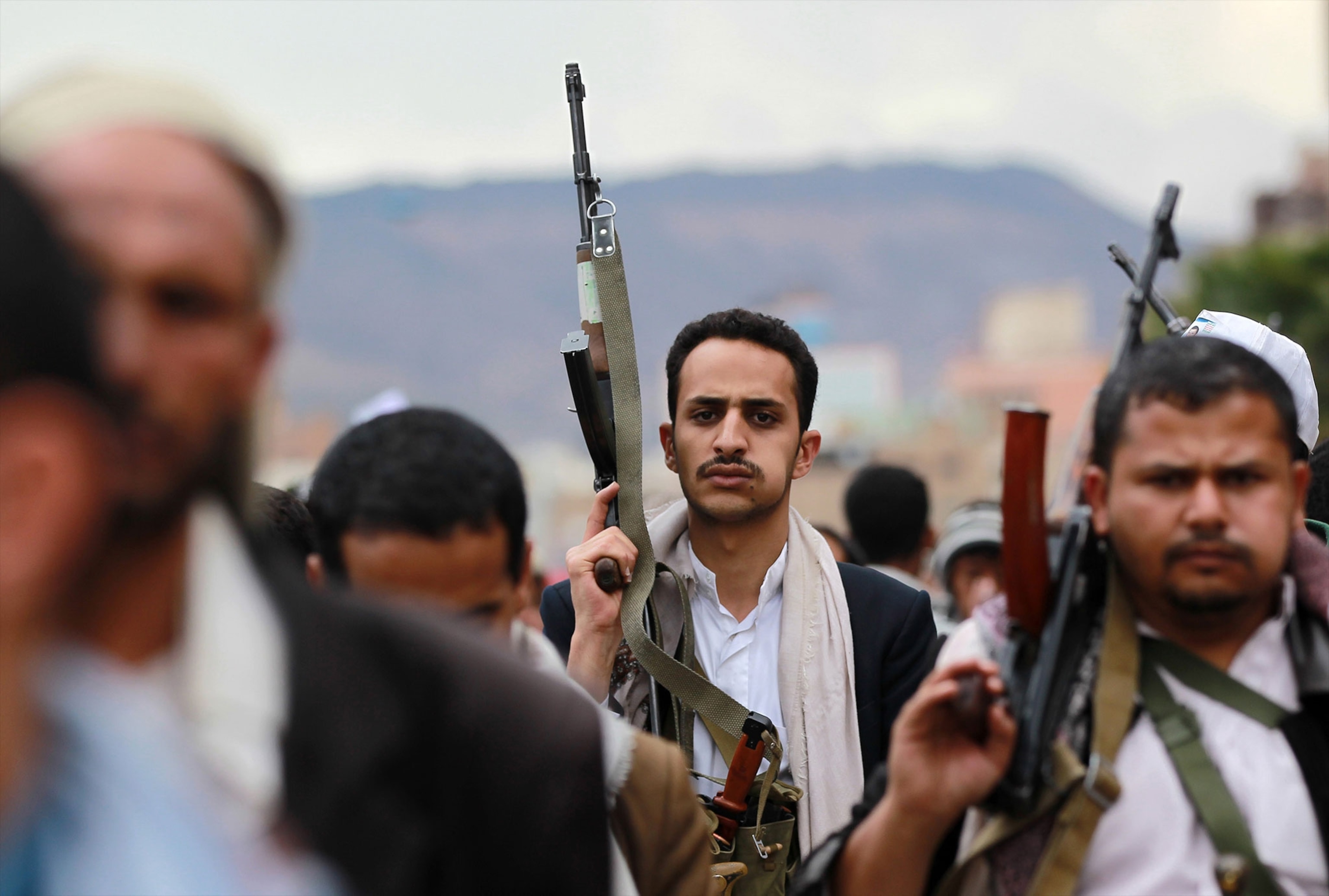
As Yemen Descends Into Chaos, Key Questions and Answers
Making sense of a growing conflict that involves a bewildering number of players
The recent surge of violence in Yemen has spiraled into a crisis that extends far beyond the nation's borders. After Shiite militias swept across the country and forced Yemen's president, a Sunni, into exile, Saudi Arabia responded with air strikes. Ten other countries are providing fighter jets for the assault, and the U.S. is helping with logistics.
The conflict involves a bewildering number of domestic players, including the Shiite rebels and their backer, Yemen's ousted dictator; southern Sunni secessionists; and al Qaeda in the Arabian Peninsula. (Read more about Yemen's deep divisions.)
Here's a primer on the country, its confusing crisis, and why so many other countries have a stake in its outcome:
What is the fighting in Yemen all about?
Yemen, the poorest country in the Arab world, has been pushed to the brink of civil war by a confrontation between a Shiite rebel group and forces loyal to Yemen's president, Abd Rabbuh Mansour Hadi, a Sunni from the southern port of Aden.
In recent months, the Houthis have advanced across the country. They seized control of Sanaa, the capital, last September, and forced Hadi to take refuge in Aden four months later. This month, they entered Aden and Hadi fled to Saudi Arabia.
The fighting is now seen by many as a proxy war between the Saudis, who back Hadi, and Iran, which is suspected of supporting the Houthis, though there's no hard evidence of that. In late March Saudi Arabia launched air strikes against Houthi positions in Aden with the aim of restoring Hadi as president.

Who are the Houthis?
The Houthis, also known as Ansar Allah (Partisans of God) are affiliated with one of the oldest branches of Shiite Islam, called Zaidism. This branch emerged in Yemen in the eighth century A.D. and was named after Zayd ibn Ali, the grandson of Hussein ibn Ali, the Prophet Muhammad's grandson.
Today about 35 percent of the country is Zaidi. Their stronghold is Saada Governate, in the northwest corner of the country. The Houthis have expressed animosity against the United States, Israel, and the Jews—repeatedly threatening Yemen's tiny Jewish community, which was protected under the last government.
What's their beef?
The Houthis—named after their founder, Hussein Badr al Din al Houthi—launched their first rebellion in 2004, against Yemeni longtime strongman-president, Ali Abdullah Saleh. They were demanding more autonomy for their northern enclave, which is one of the poorest and most neglected corners of Yemen.
Saleh unleashed Yemen's army, which killed al Houthi and destroyed Sadah [the capital of Saada], but only made the Houthis more determined to continue their struggle. Three subsequent revolts were also put down, the last one in 2010.
How did they rebound?
In 2011, the Arab Spring spread to Yemen. Demonstrators—including many Houthis— filled the streets of Sanaa and other cities, demanding the resignation of Saleh, a corrupt figure who ruled the country with the support of Yemen's most powerful tribe. When the tribe joined the protesters in the streets, Saleh was forced to resign in February 2012 and his vice president, Hadi, was installed as his successor.
Hadi inherited a weak and divided security apparatus and was never able to assert control over the fragmented country. A National Dialogue Conference last year created a new constitution and set up a six-region federal system, but the Houthis declared they were unhappy with the deal and vowed to resume their rebellion.
What happened to Saleh?
The 2011 agreement, brokered by regional powers, that forced Saleh to relinquish power had one glaring weakness: It didn't compel him to leave the country. Saleh continued to meddle in Yemeni politics, undermining President Hadi by making alliances with his political enemies and retaining the loyalty of about half the country's security forces. When the Houthis began advancing from the north, the ousted strongman saw that an alliance with his former mortal enemies could pave his way back to power.
Does the United States have a stake in this?
It does, not only because Yemen is located on the Gulf of Aden, a strategic shipping lane between Arabia and Africa, but also because the country has nurtured one of the world's most dangerous Islamic terrorist groups: al Qaeda in the Arabian Peninsula. AQAP has established sanctuaries in mountainous provinces east of Aden, carried out terrorist attacks in Yemen, and expanded its reach abroad: U.S.-born AQAP militant Sheikh Anwar al Awlaki planned a series of terrorist operations targeting the U.S. before he was killed by a U.S. drone in September 2011.
The brothers Said and Cherif Kouachi both received training at an AQAP base in Yemen's Marib Governate before executing the Charlie Hebdo attack in Paris in January 2015.
Both Saleh and Hadi cooperated with the U.S. on counterterrorism, sharing intelligence and attacking AQAP on the ground. But in the current chaos, AQAP—which considers the Shiite rebels to be apostates—has been able to regroup and has launched a series of devastating attacks in Yemen.

What exactly has been Saudi Arabia's role in Yemen?
Saudi Arabia, Yemen's next-door neighbor, fears a resurgence of Islamist terrorism if the country slides deeper into war, and is also determined to prevent Shiite Iran from gaining more influence in the region. Earlier this month the kingdom launched Operation Decisive Storm to rescue Yemen's deposed government, drawing together eight other Sunni-dominated countries: Morocco, Egypt, Jordan, Kuwait, Bahrain, the United Arab Emirates, Qatar, and Sudan. All have provided jet aircraft to bomb Houthi strongholds.
The United States, which considers Saudi Arabia its strongest and most vital Arab ally—and which had regarded Saudi Arabia as a reliable ally in the war against AQAP—is providing logistical and intelligence support.

What happens next?
In the short term, expect the death toll to climb as the coalition's bombing campaign and al Qaeda terrorist attacks intensify; at least 40 civilians were killed in an air strike on an internally displaced persons' camp in northern Yemen on March 30.
In the longer term, Yemen faces further chaos and disintegration. Since the Houthis began their advance last year, a Sunni separatist movement in the south, Hirak, has gained momentum. The Sunni-dominated south, which existed as an independent state between 1967 and 1990 and lost a civil war against Saleh's army in 1994, is likely to step up its push for secession even if the Saudis drive the Houthis out of Aden and restore President Hadi to nominal power. That raises the prospect of more young, disaffected Sunnis joining forces with radical Islamists to further their goals.
Whatever happens, the real winner in Yemen's tragedy is likely to be al Qaeda.
Follow Joshua Hammer on Facebook.
